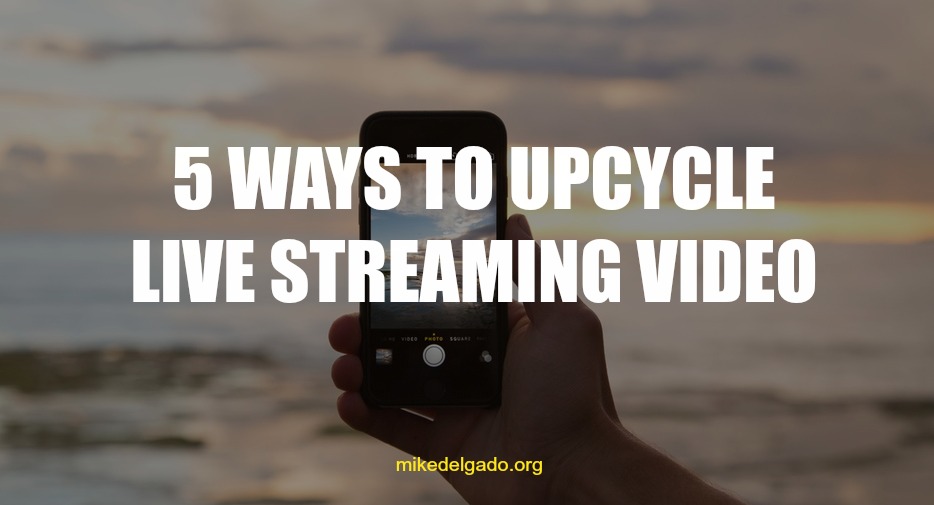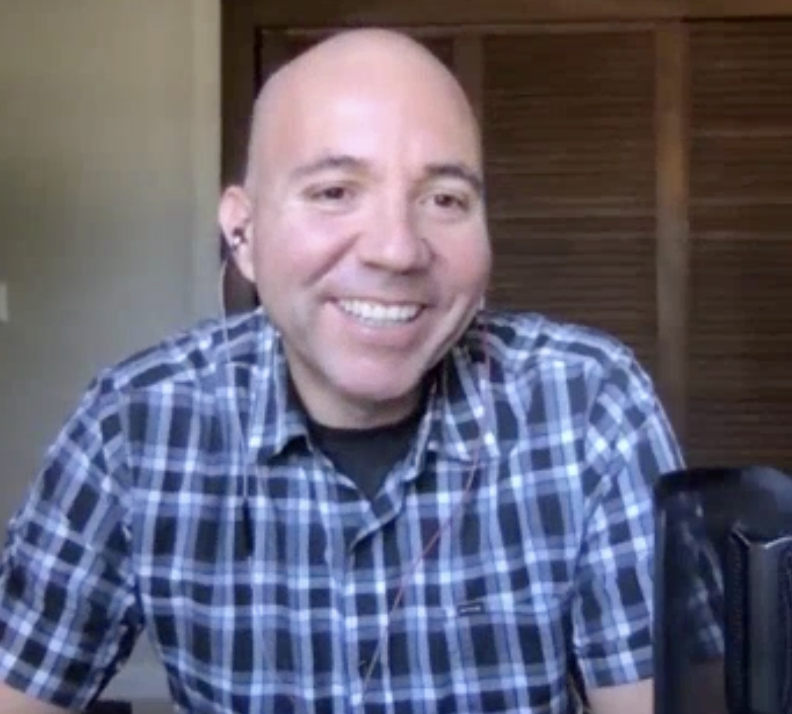
Live streaming video content lives on — so make sure it’s valuable enough to re-share and re-package.
This means, you need to be selective about what you decide to stream. And you need to be thinking about how the video can provide value for those who didn’t view it live.
It’s not just about getting more replays, it’s about re-packaging the live stream to serve those who missed it. And you should always think about ways to upcycle that live stream video into channels and mediums that new audiences will find useful.
Here are five simple ways you can upcycle your high-value live streaming content:
1. Pull the audio to use for podcasting. One of the beautiful aspects of live streaming on Blab is that hosts automatically get a HD video and audio file after the stream is over. Brands should be taking these audio files to re-purpose in podcasts or take killer audio clips to feature on SoundCloud (which can be easily embedded on blog posts and shared out on other social channels).
Before I was addicted to Blab, I was pulling audio from our Google+ hangouts on air to supplement our weekly podcast. To me, this is easy content to create – but you need to make sure you’re creating live video content that will be useful in audio format.
I love how innovators like Saba Sedighi and Carlos Gil think strategically about their live video streams and repackage each blab into a killer Social 545 podcast. If you’d like to follow my work on blab, you can subscribe to my Experian blabs here or my personal blabs here.
2. Upload the full video or video highlights to your favorite social networks. Too many brands treat live video like the Ronco Rotisserie oven where you “set it and forget it.” After all, some live streaming apps delete the file after 24-hours, so why does it matter what you’re streaming? Sadly, this approach to live streaming is almost equivalent to spam. What’s the point of creating content that has no value after you’re done making it?
Even if your live streaming app (e.g. Periscope, Meerkat) doesn’t allow replays after 24 hours, this doesn’t mean the video and audio can’t be salvaged and re-used in other places. Make it a point to save the video on your camera roll (to easily upload to YouTube) and make sure you’re archiving the Periscope/Meerkat video and comments on Katch.me. This way you can embed the video files easily on blog posts and spend time reading through all the comments you might have missed.
If you’re focused on creating high-value video content, don’t let it die after 24-hours. Repackage it for other channels.
3. Celebrate your community by creating visuals to highlight their great ideas in real-time. If you have at least two people on your social team, you have a wonderful opportunity to serve and love your community by creating fun visuals to highlight live comments in a visual way. This takes some quick work, but it’s a beautiful way to give back to your community (while creating useful graphics that can be shared out later).
For example, when we run our weekly #creditchat on Blab and Twitter, we’re not only trying to pull key quotes from the live discussion to post in the Blab sidebar, but also creating visuals in real-time to highlight the live discussion on Twitter. We then take all the visuals created and assemble them into a SlideShare deck that gets posted right after the live event.
Here is quick look of one of our weekly decks:
4. Create a blog post to summarize and/or highlight key messages from your live stream. Many brands are not re-sharing out their live streams on blog posts. There is a tremendous opportunity to feature the video and summary of what you discussed in a simple blog post. You might not have time to create a blog post for every scope, but you should definitely create one for every interview you’ve done on Blab or Google+ hangouts on air.
You’ve already got a live stream video recorded (and possibly a graphic created) so why not add highlight what was learned in a quick blog post. You’ll not only expose your blog audience to your live streams, but you’ll add some new media to your blog. It’s a win-win.
5. Fuel your future content by analyzing the topics and questions your community asks in real-time. If you want to create better (and more useful content) for your community, then you better start live streaming. There is no faster way to capture the pulse of what your community is thinking about than with real-time video.
Personally, I find the comments from our daily scopes extremely helpful when deciding on future content. Live streaming video not only gives us real-time interaction with our community, but we find out what questions and topics we need to be covering in future streams. I learn so much from my community in our daily scopes (and it’s become a goldmine of content ideas for blogs, videos, and graphics as well).
You might think you know your community well, but you’ll learn about them in a whole new way by talking with them in live streaming platforms.
Brands, if community and content is important to your business, you need to embrace live streaming. Use these live streaming platforms strategically because the content you produce can have even more value after your live event is over.
Are you testing out live streaming apps? What are ways you’d like to see brands use these channels?

